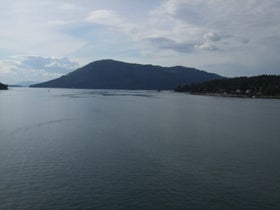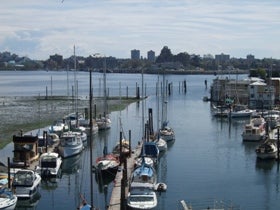At the end of the day, all fishing communities have one thing in common: they all depend on healthy, productive fish stocks. Catch shares management help fishing communities by maintaining fish stocks or bringing them back, while increasing the quality and profitability of fishing jobs. They can also include tools and mechanisms that benefit communities, things you won’t find under traditional management.
Today more than 60 federal fish stocks are overfished or undergoing overfishing. As a result, thousands of fishing jobs have been lost. Under conventional management, fishermen in these underperforming fisheries face closures, ever-increasing limits on harvest levels, and dwindling seasons. When fishing is allowed they are often forced into a dangerous and inefficient race for the fish.
For example, under conventional management, the West Coast trawl fishery has been on a downward economic spiral. Plants have closed, infrastructure has been lost, and ports have become shadows of their former selves. An estimated 15% of the fleet has left the fishery due to lack of fishing opportunity in the last five years; fishermen have been leaving the industry, creating worsening economic conditions for communities that have historically relied on groundfish landings. Under status quo management, a few major players have bought up a large number of permits, consolidating ownership and leading to fewer owner-operators on the water.
In contrast, catch share programs can include ways to deliver the benefits of a healthy fishery to communities, including fair allocation, limits on consolidation, and opportunities for new entrants. Catch shares can also include ways to conserve the resource so that the fishery will deliver benefits into the future.
Specifically, the forthcoming Pacific groundfish catch share includes:
- Strict ownership caps for each species in the plan to ensure that no individual fishermen or entity can accumulate excessive amounts of quota. There are also caps on the amount of species quota that any entity can control through business arrangements.
- An Adaptive Management Program that will be used to stabilize fishing communities and maximize benefits of the program while protecting against unanticipated consequences. For example, the adaptive management quota can help traditional fishing ports maintain access to landings of groundfish. The program takes 10% of the trawl total allowable catch and dedicates it to a public trust pool.
- In addition, the Pacific Fishery Management Council is developing guidelines for community fishing associations and collective fishing arrangements. These programs will provide communities with the opportunity to maintain access to groundfish, opportunities that do not exist under status quo management.
- Room for new entrants – Quota is divisible down to the single pound level, meaning that young fishermen can buy in slowly, one pound at a time. Likewise, as some fishermen leave the fishery, permits will become available for purchase. In addition, quota from the Adaptive Management Program mentioned above could be leased or loaned to new entrants to enable them to enter the fishery at reduced cost.
Current management is failing to make fishing a profitable livelihood for the fishermen that rely on the resource. This in turn is putting our fishing communities in danger, and catch shares are coming at a time when many fishing ports are already extremely vulnerable. Catch shares provide the means for communities to benefit from a productive and renewed fishing fleet.











 I just read
I just read  Ecotrust highlights that catch shares have led to increases in the value of fisheries. Significant societal benefits are associated with these changes, including providing fishermen and crew with more stable jobs; providing opportunities for creative business innovations; more highly valued seafood; and increased investment in modernizing fishing boats and gear. However, Ecotrust focuses on the economic impacts on a specific group of stakeholders in fisheries: primarily fishing crews. Ecotrust’s central complaint is that the practice of leasing quota share disadvantages British Columbia fishing crews, compared to share owners or other stakeholders.
Ecotrust highlights that catch shares have led to increases in the value of fisheries. Significant societal benefits are associated with these changes, including providing fishermen and crew with more stable jobs; providing opportunities for creative business innovations; more highly valued seafood; and increased investment in modernizing fishing boats and gear. However, Ecotrust focuses on the economic impacts on a specific group of stakeholders in fisheries: primarily fishing crews. Ecotrust’s central complaint is that the practice of leasing quota share disadvantages British Columbia fishing crews, compared to share owners or other stakeholders.